Storytelling Through Travel Photos – Capture Memories That Last
Published: 27/09/2025
Traveling gives us new places, new faces, and unforgettable memories. For me, the best way to hold these stories is through photos. A single picture can bring back the smell of food from a busy street, the laughter of children, or the quiet of a mountain sunrise.
Photos are like time machines; they take us back and let us feel the moment again. This is why I call travel photography a form of storytelling. It is not just about clicking monuments or landscapes, but capturing moments that speak. Each photo becomes a chapter of the journey, turning simple memories into lasting stories.
In this guide, we’ll learn how to tell a story with photos, capture culture, use composition, and share travel experiences in meaningful ways. Ready to see travel photography differently?
Let’s start.
Why Photos Tell Stories and Bring Memories Back to Life
When we travel, we experience culture, people, and landscapes. Through photos, we can hold on to those moments and take them back with us. Later, when I look back, I don’t just see a picture; I see a memory filled with sounds, smells, and feelings. This is how photos tell powerful stories when we travel. A photo can take us back to the exact mood of that moment and let us relive it.
For example, when I clicked a picture of a busy street in Lahore, the smell of food, the sound of people talking, and the colors of shops all came back to me when I saw it later. I almost felt the noise and flavors surrounding me just like before. Photos do more than show; they remind and transport us back into the story.
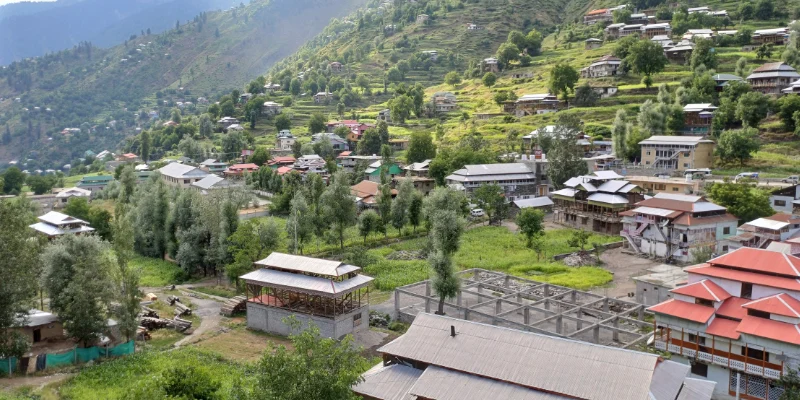
Travel Photography Tips
If you want your travel pictures to tell a story, some habits can make a big difference. These are not hard rules but simple practices that have helped me capture better memories on my trips around Pakistan.
Think before you click
Before pressing the button, pause and ask: What do I want this photo to say? A picture of Badshahi Mosque, for example, can look like just another building if you don’t frame it with meaning. But if you capture it during prayer time with people walking in, the image suddenly tells a richer story.
Focus on emotions
Emotions bring photos to life. A smiling child flying a kite on Basant, a shopkeeper serving chai in Peshawar’s Qissa Khwani Bazaar, or friends laughing at Clifton Beach in Karachi, these moments connect the viewer with the place.
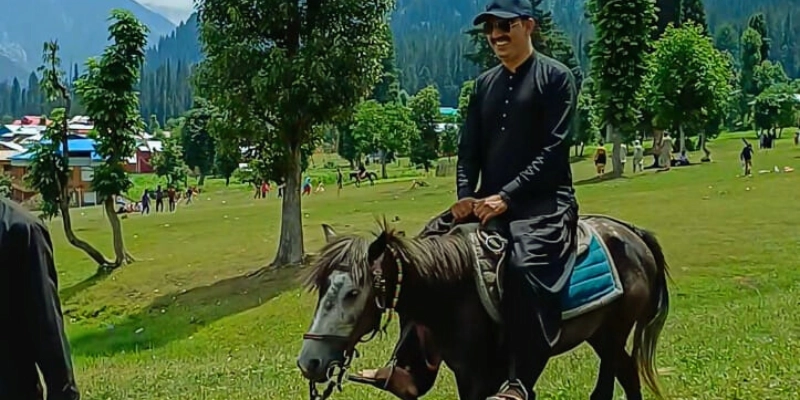
Use natural light wisely
The best light usually comes early in the morning or late in the evening. In the Hunza Valley, sunrise lights up the mountains with a golden glow, while evening in Lahore’s Walled City gives warm tones to the streets. Harsh midday sun often makes photos flat, so I try to avoid it unless shadows add drama.
Capture movement
Still photos don’t have to feel. A photo of fishermen pulling nets at Gwadar, buses rushing through Saddar, or people crossing a busy road in Karachi shows the rhythm of life. Movement adds energy and realism to your story.
Take a photo series
Sometimes one image is strong, but several together tell the journey more clearly. For example, at a wedding in Multan, I clicked the decorated entrance, the food being served, and guests enjoying themselves together. When placed side by side, the photos formed a mini story of the event.
Pay attention to details
Small things often speak louder than big scenes. A cup of doodh patti with steam rising, henna on hands during Eid, or colorful trucks parked on the roadside, these details add depth to the story.
How to Tell a Story with Photos
You don’t need to be a professional photographer to tell stories. The story in your travel photos depends on your perspective, not the device in your hands. Here is how I approach it:
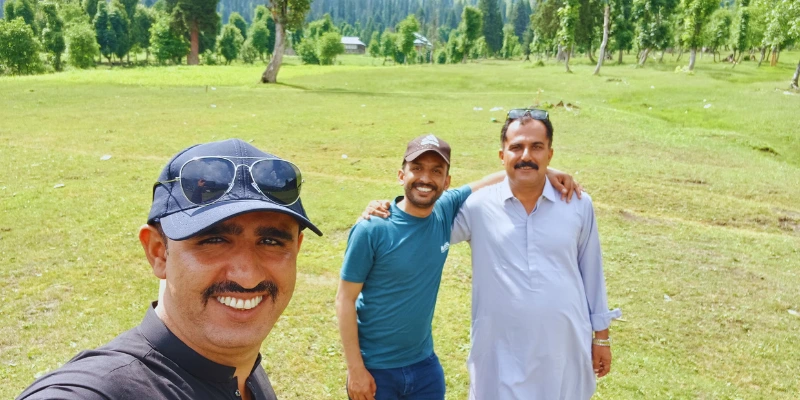
Begin with a scene
Start by showing where you are. A wide shot of a Gilgit market, a view of Faisal Mosque, or the streets of Lahore sets the stage.
Add details
After the big picture, bring the viewer closer. Show the food being cooked, the signs on the shops, or the patterns on clothing. These details give character.
Show people
People are the heart of every story. Faces, gestures, and expressions connect the viewer emotionally with the place. Sometimes, just a shadow or a person moving away makes the scene feel more human.
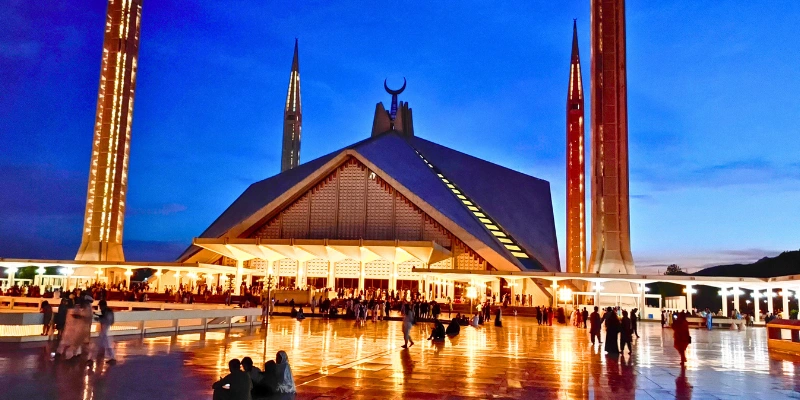
Close with emotion
Finish with a picture that leaves the viewer with a mood to remember. A sunset over Makran Coast, children waving at the camera in Swat, or an old man sitting quietly outside his shop, these small endings stay in memory.
When you follow these steps, your photos act like chapters in a travel diary. They don’t just record where you went, they explain what life felt like in that moment.
Photography Composition for Storytelling
Composition refers to the arrangement of elements within your photo frame. A strong composition is what makes people stop and look at your photo, and it also helps them understand the story you want to tell. When traveling, the way you arrange your photos can turn a simple picture into something meaningful.
Here are some ways I use composition for storytelling:
Rule of thirds
Instead of keeping your subject always in the center, place it slightly to the left or right. This gives balance and makes the photo more interesting. For example, if you are clicking a shepherd in Skardu with mountains in the background, keep him a little off-center so the viewer also feels the vastness of the mountains.
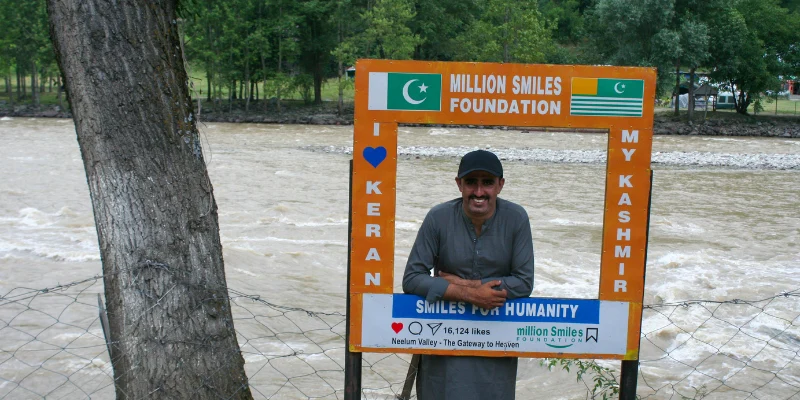
Leading lines
Paths, streams, walls, or even shadows can naturally pull the viewer’s eyes toward your subject. In Pakistan, the Karakoram Highway is a perfect example. If you stand on a curve and capture the long road going into the mountains, the line itself tells the story of adventure and travel.
Foreground and background
Don’t just focus on one subject; show what is close and what is far to create depth. Suppose you’re photographing the Badshahi Mosque, one of Lahore’s most iconic landmarks. If you capture a person walking in the courtyard (foreground) with the mosque standing tall in the background, your photo suddenly feels alive and layered.
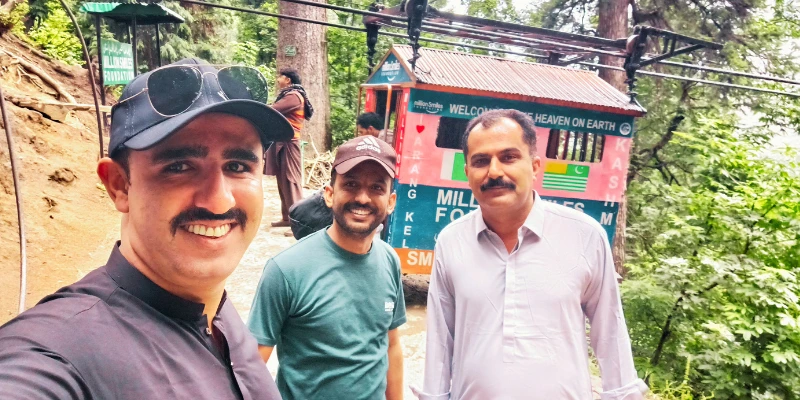
Framing
You can use frames such as archways, windows, or even trees to draw focus to your subject. For example, capturing Faisal Mosque with the Margalla Hills’ greenery around it gives the photo a natural frame and a more artistic look.
Symmetry and patterns
Sometimes, repeating designs or symmetrical structures make for powerful storytelling. Think of the geometric patterns on Multan’s shrines or the rows of boats on Clifton beach — these add rhythm to your photo.
By mixing these simple techniques, your travel photos will not only look beautiful but also tell a complete story about the place, the people, and the moment you experienced.
Capturing Culture Through Photography
Every city, town, and village in Pakistan has its own flavor, and culture is what brings it to life. Capturing culture through photography makes your travel photos more than just pretty frames; it gives them meaning. A single picture can say what words often cannot.
Think about Faisal Abad’s busy bazaar, where colorful stalls overflow with fabrics and spices. Or imagine a plate of steaming chapli kebabs in Peshawar, photographed not just for the food but for the hands preparing it on a traditional tandoor. Even a street qawwali performance in Lahore’s Data Darbar area carries the sound, spirit, and emotion of the place through an image.
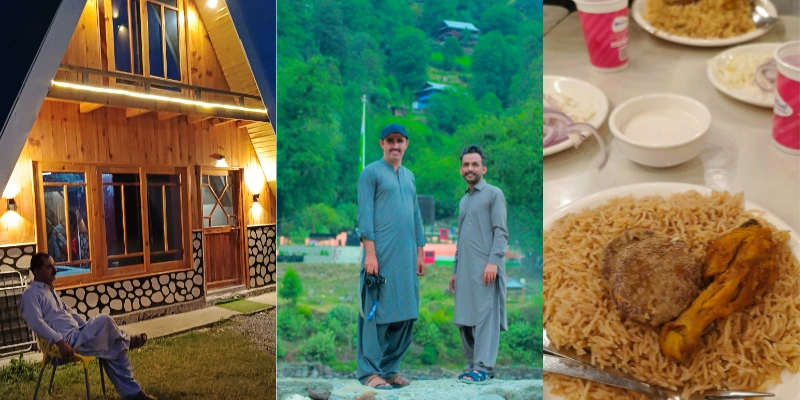
Festivals are also a treasure for storytelling photography. Whether it’s Basant in Lahore with kites flying high, chilam joshi festival in Kelash wadi, Eid gatherings with families sharing meals, or even small village weddings, these are moments where culture shines brightest. Photos taken here don’t just say “I was here.” They say, “This is how people live, celebrate, and connect.” That’s the kind of storytelling that makes your travel photography unforgettable.
Travel Photography Ideas
Sometimes, travelers get stuck thinking photos must always be of famous places like Minar-e-Pakistan or Faisal Mosque. But in reality, the heart of travel photography lies in the little everyday moments. Here are some simple photo ideas that work beautifully in Pakistan:
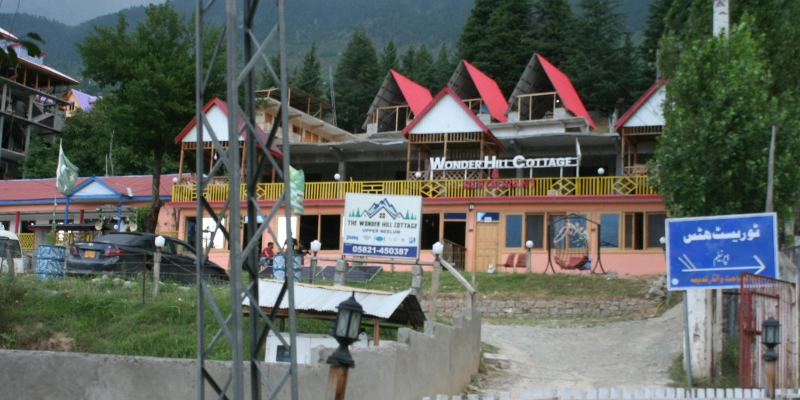
Local Markets
From Lahore’s Anarkali to Peshawar’s Qissa Khwani, the markets don’t just sell goods — they tell stories through colors, textures, and the people moving between them. A photo of a fruit seller arranging mangoes or a spice stall stacked with red chilies tells a deeper story of daily life.
Traditional Food
Food is more than taste; it’s culture on a plate. Capture Biryani being served in Karachi, sajji roasting in Quetta, or a chai dhaba on the roadside. These images carry flavors even without words.
Streets and Buildings
Every street has a character. The narrow lanes of Multan’s old city, with blue pottery shops, or the colonial buildings in Rawalpindi Saddar, make perfect subjects for travel shots.
Faces of People
Nothing speaks louder than expressions. A shepherd with his flock in Gilgit-Baltistan, a fisherman at Karachi’s port, or children playing cricket in a village street, these portraits bring humanity to your photography.
Sunsets and Sunrises
Pakistan offers stunning natural light. From the golden glow wrapping the Badshahi Mosque in Lahore to the first rays touching the peaks of Skardu, these moments bring pure magic to your gallery.
Everyday Life
Simple activities, like a chaiwala pouring tea, farmers working in the fields, or women weaving in Sindh, tell bigger stories than most monuments. These scenes give your photos honesty and warmth.
The truth is, landmarks will always impress, but it’s these smaller slices of life that help you tell a real story of the places you visit.
Emotional Storytelling Through Pictures
Great photos carry feelings. Emotional storytelling through pictures is about capturing not just what you see, but what you feel. A photo of a lonely bench in the park can tell a story of peace or even sadness. A group laughing in a café can show joy and togetherness.
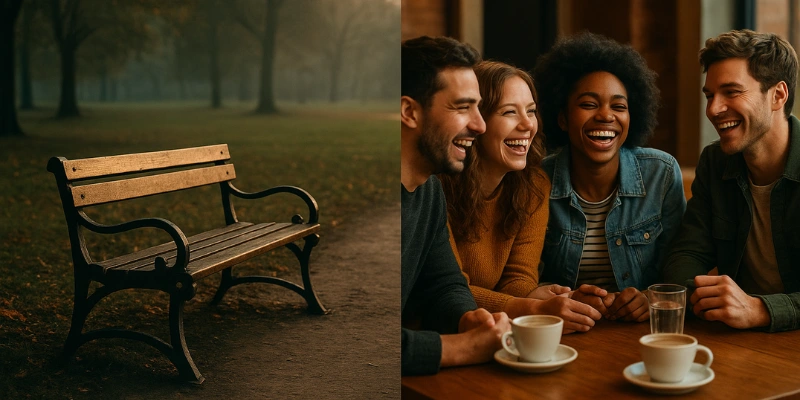
When people see my photos, I want them to feel something inside. That’s when I know I’ve told a story.
How to Make Travel Photos Meaningful
When I take a picture, I ask myself a simple question: “Will this photo still matter to me years later?” If the answer is yes, I click it. To make travel photos meaningful, you don’t always need the biggest landmarks or the most famous spots. Those are nice, but they are often the same pictures everyone else has. What makes your photos special are the small, personal moments.
Think about the shop where you bought fresh bread in the morning, or the tea stall where you had a quiet break after walking for hours. Even the rickshaw or taxi you rode in tells part of your journey. These small scenes bring your story alive later because they remind you of the feeling, the smell, and the sounds of that day.
For example, if you are traveling in Lahore, a picture of Minar-e-Pakistan is great, but a shot of the chai wala pouring tea in Anarkali Bazaar might remind you more of how the city felt. Years later, those photos carry more weight because they capture not just places, but your real travel story.
Using Photos to Share Travel Experiences
We live in a time where everyone shares pictures online, but not all photos connect with people. Instead of only posting a location shot, I try to use my photos to tell an experience. I often add small captions with them, something about what I felt in that moment or a memory behind the scenes.
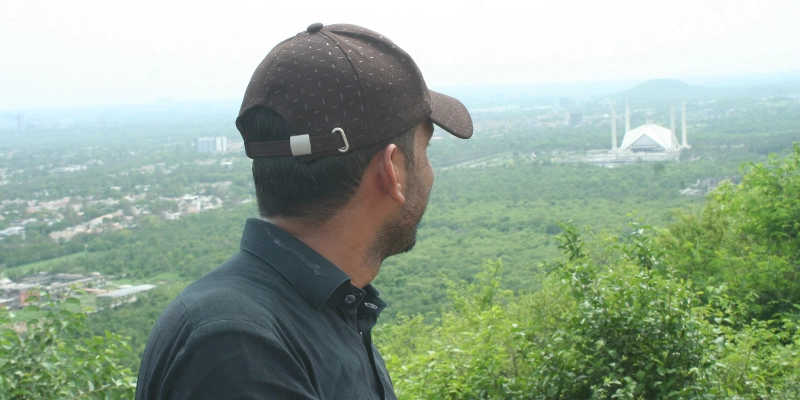
For example, if I share a picture of Quetta’s Hanna Lake, I might write, “It was early morning, the air was cold, and I remember buying a hot cup of doodh-patti from a stall nearby. This photo reminds me of that warmth.” This small detail lets people see more than just the lake; they get a sense of the memory itself.
By doing this, your travel photos stop being just pictures. They turn into stories. Friends and family don’t just see where you went, they understand what you lived. And one day, when you look back, you’ll also feel the same connection.
Final Thoughts
Travel is more than just going from one place to the next. It is about the memories, feelings, and stories you carry back with you. Photos give those stories a home and keep them alive long after the trip ends. When you see travel photography as storytelling, you are no longer just a visitor with a camera. You become a voice that shares emotions, culture, and moments in a way that connects with others.
So, on your next trip, focus on collecting stories through your photos rather than just filling up an album. Let every picture speak of the place, the people, and the mood of the moment. And if this guide added value to your journey, share it with fellow travelers so they, too, can capture their experiences in a meaningful way.
And if this guide gave you something useful, share it with fellow travelers. Help them see that photography is not only about snapping shots, but about capturing the spirit of a place and carrying it forward in a meaningful way.
FAQs
Storytelling in travel photography means using your photos to show emotions, culture, and moments instead of just random places. It’s about making your photo say, “This is how it felt to be here.”
No, not at all. You can tell great stories even with your phone camera. What matters most is your eye for moments, not the gear you use.
Focus on small details like a tea stall, kids playing cricket, or a smiling shopkeeper. These everyday moments often tell stronger stories than big landmarks.
Early morning and late evening are usually the best. The light is soft and warm, which makes photos look more natural and beautiful.
Look for food, markets, festivals, clothes, and traditions. For example, a picture of people flying kites in Lahore during Basant tells more about the culture than a plain building shot.
Because emotions connect people. A smile, a laugh, or even a quiet moment can make viewers feel the story behind the photo.
It’s a simple way to make your photo more balanced. Instead of keeping your subject in the center, place it slightly to the side. This makes the photo more interesting to look at.
Don’t just post a picture. Add a short caption or memory about what was happening when you clicked it. That way, people feel the story, not just see the image.
Yes, absolutely. Anyone can start storytelling through photos. You don’t need fancy equipment, just curiosity, patience, and a love for noticing details.

- Be Respectful
- Stay Relevant
- Stay Positive
- True Feedback
- Encourage Discussion
- Avoid Spamming
- No Fake News
- Don't Copy-Paste
- No Personal Attacks

- Be Respectful
- Stay Relevant
- Stay Positive
- True Feedback
- Encourage Discussion
- Avoid Spamming
- No Fake News
- Don't Copy-Paste
- No Personal Attacks


